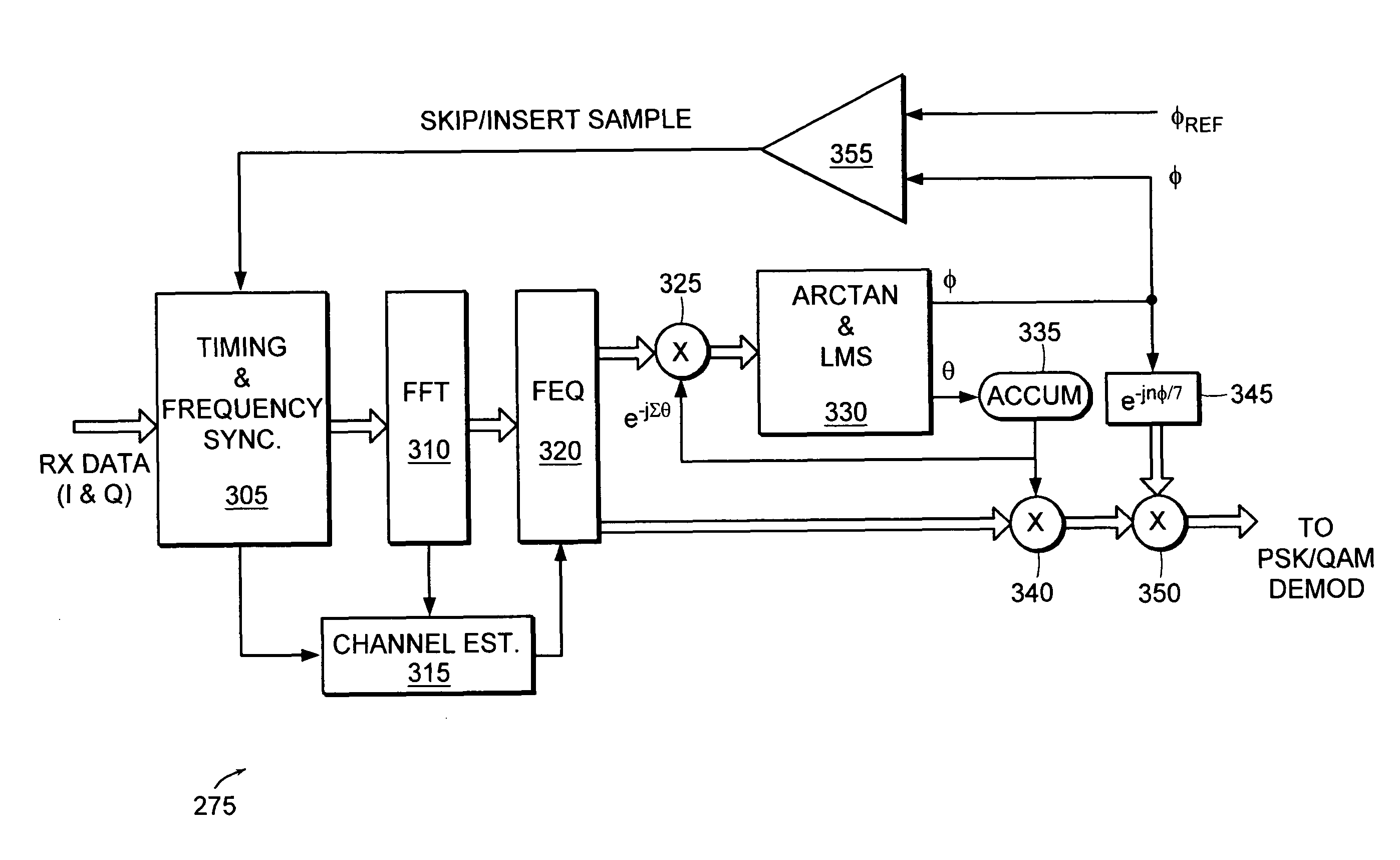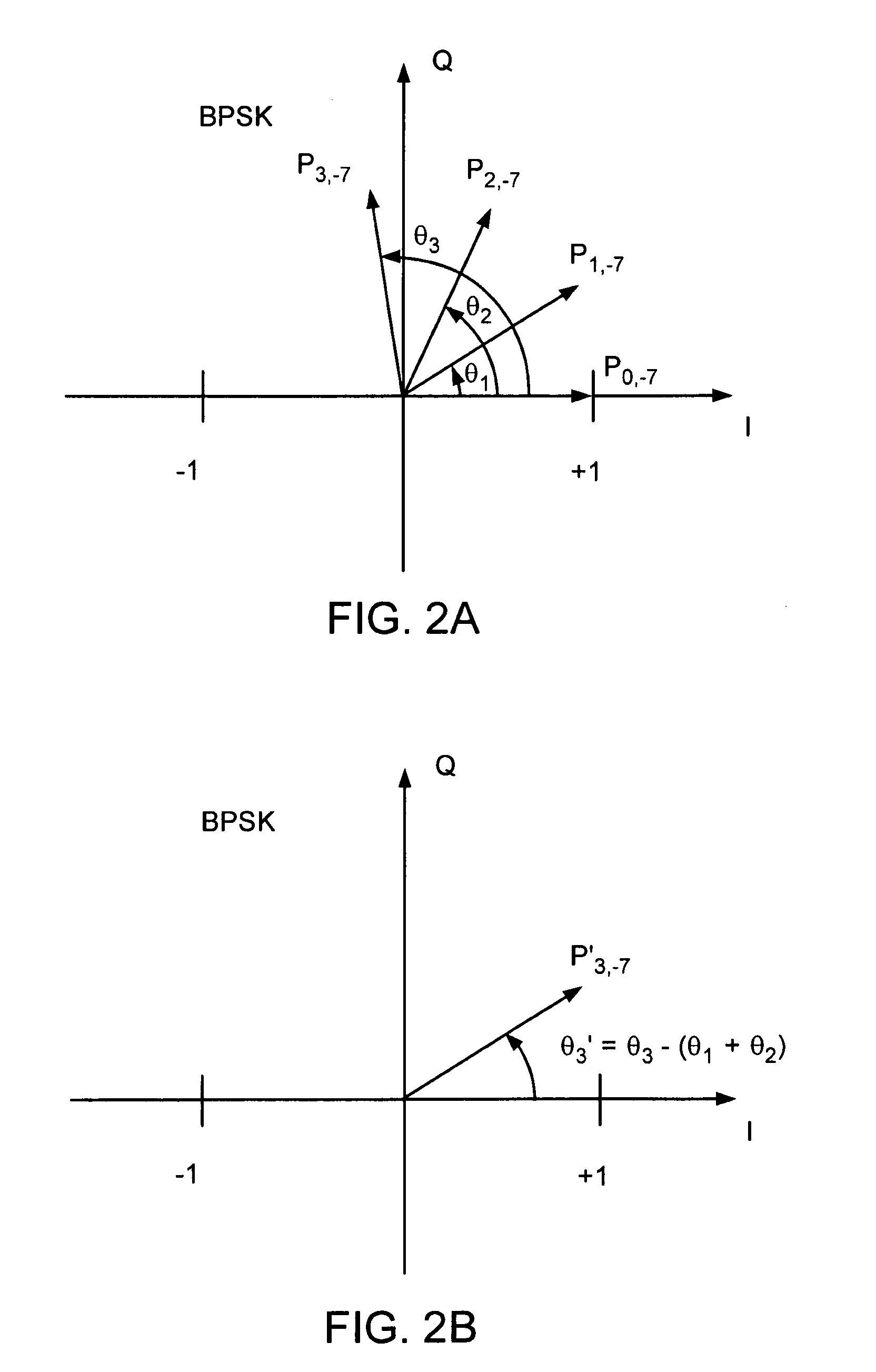Receiver architecture for pilot based OFDM systems
a pilot-based, ofdm-based technology, applied in the direction of digital transmission, modulated carrier system, electrical apparatus, etc., can solve the problems of high frequency offset, phase noise perturbation, clock offset, and inability to meet the requirements of the pilot-based ofdm system, etc., to achieve robustness, cost-effectiveness, and hardware-efficient
- Summary
- Abstract
- Description
- Claims
- Application Information
AI Technical Summary
Benefits of technology
Problems solved by technology
Method used
Image
Examples
example
[0062]Simulation results for a 64 QAM, IEEE 802.11a OFDM system, showing the received constellation with and without LMS thresholding are shown in FIG. 8. The scenario uses a typical delay spread of 60 ns, a residual frequency offset of 3 KHz, and 2 degree, root-mean-square phase noise with a 3 dB bandwidth of 20 KHz. Perfect timing synchronization is assumed. There is nearly a 2 dB improvement resulting from the thresholding LMS scheme, over using no thresholding.
[0063]In some embodiments, the DSP 100 can be implemented in software. In other embodiments, the DSP can more preferably be implemented in hardware. In yet other embodiments, the DSP can be implemented using a combination of hardware and software.
PUM
 Login to View More
Login to View More Abstract
Description
Claims
Application Information
 Login to View More
Login to View More - R&D
- Intellectual Property
- Life Sciences
- Materials
- Tech Scout
- Unparalleled Data Quality
- Higher Quality Content
- 60% Fewer Hallucinations
Browse by: Latest US Patents, China's latest patents, Technical Efficacy Thesaurus, Application Domain, Technology Topic, Popular Technical Reports.
© 2025 PatSnap. All rights reserved.Legal|Privacy policy|Modern Slavery Act Transparency Statement|Sitemap|About US| Contact US: help@patsnap.com



